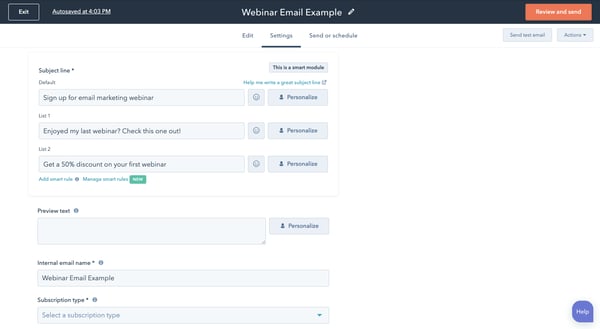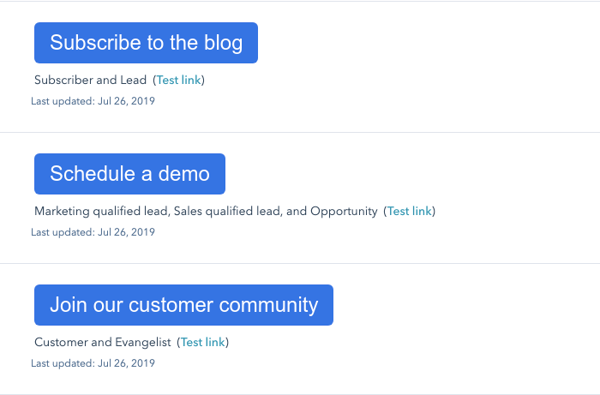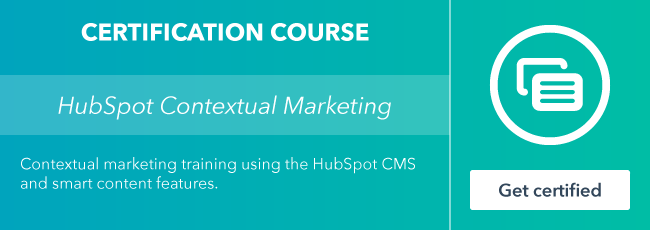Nothing feels better than receiving a personalized message from a brand you love and trust. On the flip side, nothing feels worse than getting a generic email that has no relevance to your life and was clearly part of a massive email blast.
When it comes to building trust with your audience, personalization is key. People want to feel like they matter and that their particular needs and goals are being taken into account by the businesses they buy from.
A study by Accenture found that 41% of consumers switched businesses due to a lack of personalization. Clearly, nobody wants to feel like a number when they’re interacting with a business. And they’re not afraid to find a different business that will treat them like a unique individual.
This is why personalization is so important. Creating personalized experiences throughout the buyer’s journey is what will turn leads into customers and customers into loyal brand advocates.
Using smart content in HubSpot, you can create tailored experiences for each of your contacts in your emails. Here are three easy ways to get started with smart content in emails today.
1. Smart Subject Line
It’s common practice to use personalization tokens in email subject lines to address contacts by their name or some other known factor. You can take this one step further by creating smart subject lines for your marketing emails.
When you create an email in HubSpot, navigate to the Settings tab of the email editor. Under the subject line field, click Add a smart rule. You can then create targeted content based on two different types of segments: contacts of a particular lifecycle stage, or contacts who are members of a certain list.
Let’s say, for example, you’re sending an email promoting an upcoming webinar. You have two lists you’re sending it to: customers who have attended one of your past webinars, and customers who have yet to attend a webinar. Using a smart rule, you can create two different subject lines that are customized to each of these groups. For the list of people who’ve attended a webinar in the past, you could write, “Enjoyed my last webinar? Check this one out!” And for the list of those who’ve yet to attend a webinar, write something like, “Get a 50% discount on your first webinar” or "Sign up for your first email marketing webinar."

Using a smart subject line, you can grab your customers’ attention right away and entice them to open your email.

2. Smart CTA
Another way to use smart content in your emails is by adding in a smart CTA. Smart CTAs can be tailored to contacts from different lifecycle stages, lists, device types, countries, preferred languages, or referral sources.
Based on who you’re sending the email to, you can get creative with ways to personalize the experience for different segments. If you’re sending an email newsletter to round up industry news for your followers, try adding in a CTA targeted to contacts from different lifecycle stages. For people who are early in their buyer’s journey (subscribers or leads) the CTA could read, “Subscribe to the blog” and send them to your blog for more educational content.
For people further along in their buyer’s journey (marketing qualified leads, sales qualified leads, or opportunities) the CTA could say, “Schedule a demo” and bring them to your sales team’s page where they can sign up for a demo of your product.
For people who have already purchased from you (customers or evangelists) the CTA could instead read, “Join our customer community” and lead them to a sign-up for your private customer-only Facebook group or exclusive membership site.

With smart CTAs in your emails, you can help your leads progress further in their buyer’s journey by providing them with contextual offers.

3. Smart Text
Finally, you can personalize the content of your emails using smart text. In any rich text module in your email, you can create smart rules to target contacts based on their list membership or lifecycle stage.
This is a great option if you have different content you want to show to different types of people. For your webinar promotional email, you could show first-time registrants a more detailed set of instructions for how to register and access your webinar. For returning customers, you could instead show them a recap of the previous webinar they attended, or some extra content relevant to that past webinar’s topic.
Using smart content, there are endless possibilities for personalizing your emails to provide your contacts with targeted, contextual experiences. With so many options it can get overwhelming, so make sure you’re mapping out the journey each segment will take ahead of time. Make sure to monitor the results of your smart content and optimize to provide the most personal experience possible for your customers.
Want to learn more about smart content and how to build a contextual marketing strategy from the ground up? Then check out the Contextual Marketing Certification course from HubSpot Academy.
Want to connect with others on HubSpot tips, tricks, and updates? Head over to the HubSpot Community to join a conversation or start one of your own.
